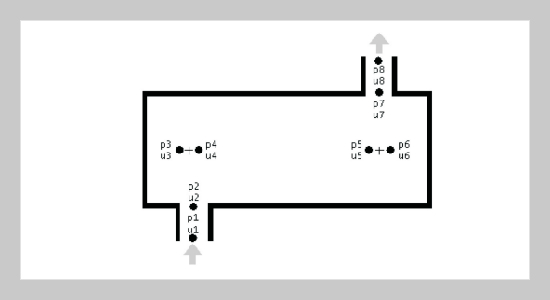Min-Chie Chiu This email address is being protected from spambots. You need JavaScript enabled to view it.1, Long-Jyi Yeh2 , Ying-Chun Chang2 and Tian-Syung Lan3 1Department of Automatic Control Engineering, Chungchou Institute of Technology, Changhua, Taiwan 510, R.O.C.
2Department of Mechanical Engineering, Tatung University, Taipei, Taiwan, R.O.C.
3Department of Information Management, Yu Da College of Business, Miaoli County, Taiwan, R.O.C.
Received:
August 28, 2006
Accepted:
July 14, 2008
Publication Date:
March 1, 2009
Download Citation:
||https://doi.org/10.6180/jase.2009.12.1.09
This paper is trying to build up the theoretical four-pole matrices for the single-chamber mufflers equipped with side inlet/outlet duct. In addition, by using the BEM simulation and the experimental works on silencers, the accuracy of above theoretical solution can be verified and reassured, accordingly. Moreover, applying the numerical optimizations of genetic algorithm (GA) and three kinds of mathematic gradient method – interior penalty function method (IPFM), exterior penalty function method (EPFM) and feasible direction method (FDM), the optimal design of silencers under constrained space can then be achieved. In this paper, considering the flowing effect, the theoretical scalar function of muffler’s noise reduction is firstly deduced by using four-pole matrices method on the basis of onedimensional plane wave theorem. Moreover, a numerical case of muffler’s shape optimization in dealing with the elimination of pure tone noise of 500 Hz under space constraints is introduced. Before optimizations being performed, the effective design variables can be selected by the computer-aided sensitivity analysis of design parameters in Matlab package. Besides, the starting points have been initialized first and then later taken into the Gradient methods for further optimization. By using Gradient Methods and GA Method, several better design data are obtained. Consequently, the best design parameter with highest STL may be determined within them.ABSTRACT
Keywords:
Single-Chamber Muffler with Side Inlet/Outlet, Four-Pole Transfer Matrix, Mathematic Gradient Method, Boundary Element Method, Genetic Algorithm, Sound Transmission Loss, Optimal Design
REFERENCES
















